Gravy is a key part of comfort food. People love it for its rich and savory taste. It can improve almost any dish. Gravy adds warmth and flavor to meals. You can pour it over mashed potatoes, serve it with roast meats, or use it to moisten your stuffing.
However, for those on a sodium-restricted diet—due to high blood pressure, kidney disease, or just a desire to eat healthier—the high salt content in traditional gravies can be a challenge. Fortunately, sodium-free gravy can be just as delicious, if not more so, when you know how to balance flavors and create that mouthwatering richness without relying on salt.
In this comprehensive guide, we’ll cover everything you need to know about making sodium-free gravy mix recipes. From the key ingredients and substitutions to step-by-step instructions and creative flavor variations, you’ll learn how to craft the perfect gravy that’s packed with flavor, minus the sodium. We’ll also dive into the health benefits of the ingredients, answer common questions, and provide tips on making and storing your gravy for any meal.
If you’re looking for more ways to lower your sodium intake without sacrificing taste, check out our Low-Sodium Mashed Potatoes in the Dinner category, which pairs perfectly with this sodium-free gravy.
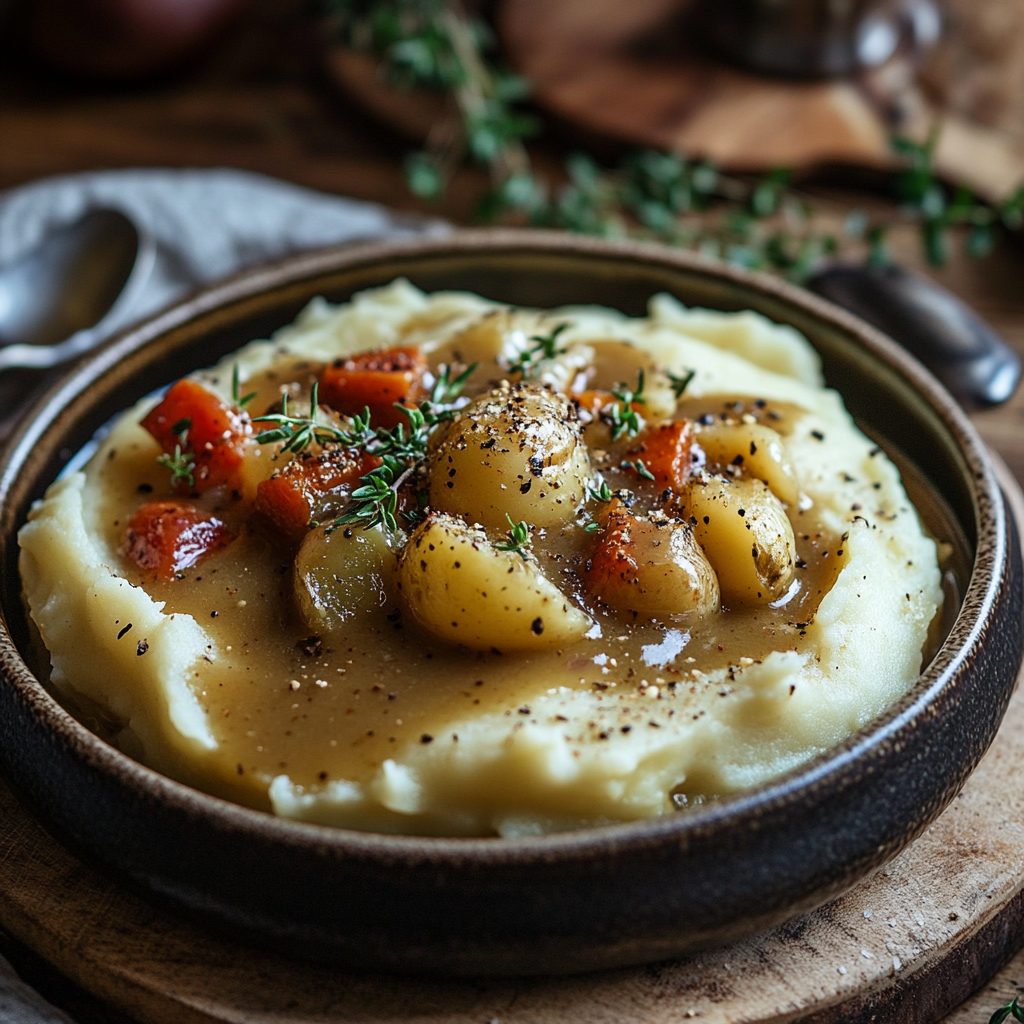
Key Ingredients and Substitutes for Sodium-Free Gravy Mix
Essential Ingredients for a Flavorful Sodium-Free Gravy
Crafting a delicious sodium-free gravy isn’t about sacrificing taste—it’s about finding the right blend of herbs, spices, and other ingredients that elevate your dish without relying on salt. Let’s take a closer look at the key ingredients and how they contribute to the flavor and texture of your gravy:
- Sodium-Free or Low-Sodium Broth: The broth is the base of your gravy, and while store-bought versions are often loaded with sodium, you can easily find or make sodium-free broth. Homemade vegetable, chicken, or beef broth is an excellent option, as it allows you to control the sodium content. Bone broth, if simmered without added salt, can provide a rich and flavorful base for meat-based gravies.
- Unsalted Butter or Dairy-Free Substitute: Butter is commonly used in gravy to create a rich and velvety texture. For a sodium-free option, use unsalted butter or a plant-based butter substitute if you’re following a vegan or dairy-free diet.
- Cornstarch or Arrowroot Powder: These thickeners are crucial for giving your gravy the smooth and luxurious texture that makes it irresistible. Cornstarch is the most commonly used thickener, but arrowroot powder is a great alternative for those looking for a grain-free option.
- Garlic and Onion Powder: Both garlic and onion powder add depth of flavor to your gravy. Because they’re highly concentrated, they help to create a robust, savory base that compensates for the lack of salt.
- Nutritional Yeast: This ingredient might sound unfamiliar if you’re new to plant-based or low-sodium cooking, but it’s a powerhouse when it comes to adding flavor. Nutritional yeast gives your gravy an umami, almost cheesy flavor that works well to enhance the taste of your gravy without salt. Plus, it’s packed with B vitamins, making it a nutritious addition.
- Herbs (Thyme, Sage, Rosemary): Herbs are the key to bringing life to any sodium-free dish, and thyme, sage, and rosemary are especially great for adding complexity to your gravy. Thyme provides a subtle, earthy note, while sage gives it a deeper, slightly peppery flavor. Rosemary can add a more fragrant and pine-like taste, especially in meat-based gravies.
- Black Pepper and White Pepper: Pepper is essential for adding spice and warmth to your gravy. Black pepper offers a more familiar flavor, while white pepper brings a slightly different, earthy heat that complements creamy or poultry-based gravies.
- Milk or Dairy-Free Alternative: While optional, adding milk (or a dairy-free alternative like almond, oat, or soy milk) gives your gravy a creamier, richer consistency. This is especially useful if you’re making a cream-based gravy, like sausage or mushroom gravy.
Ingredient Substitutes for Dietary Preferences and Allergies
For those with specific dietary restrictions, this recipe is easy to adapt. Here are a few common ingredient swaps:
- Gluten-Free: If you’re avoiding gluten, substitute regular flour with cornstarch, arrowroot powder, or potato starch. These options will help thicken your gravy while keeping it gluten-free.
- Vegan or Dairy-Free: Replace unsalted butter with vegan butter or olive oil. Instead of regular milk, use plant-based milk like oat, almond, or soy milk, which adds creaminess without compromising the vegan-friendly nature of the gravy.
- Allergen-Free: Be mindful of any allergens when selecting a broth. For example, some store-bought vegetable broths might contain celery or soy. Always read labels carefully, and consider making your own broth to avoid allergens.
Looking for another great low-sodium option to pair with this gravy? Try our Sodium-Free Vegan Meatballs from the Snacks category, which make a perfect companion to this hearty gravy.
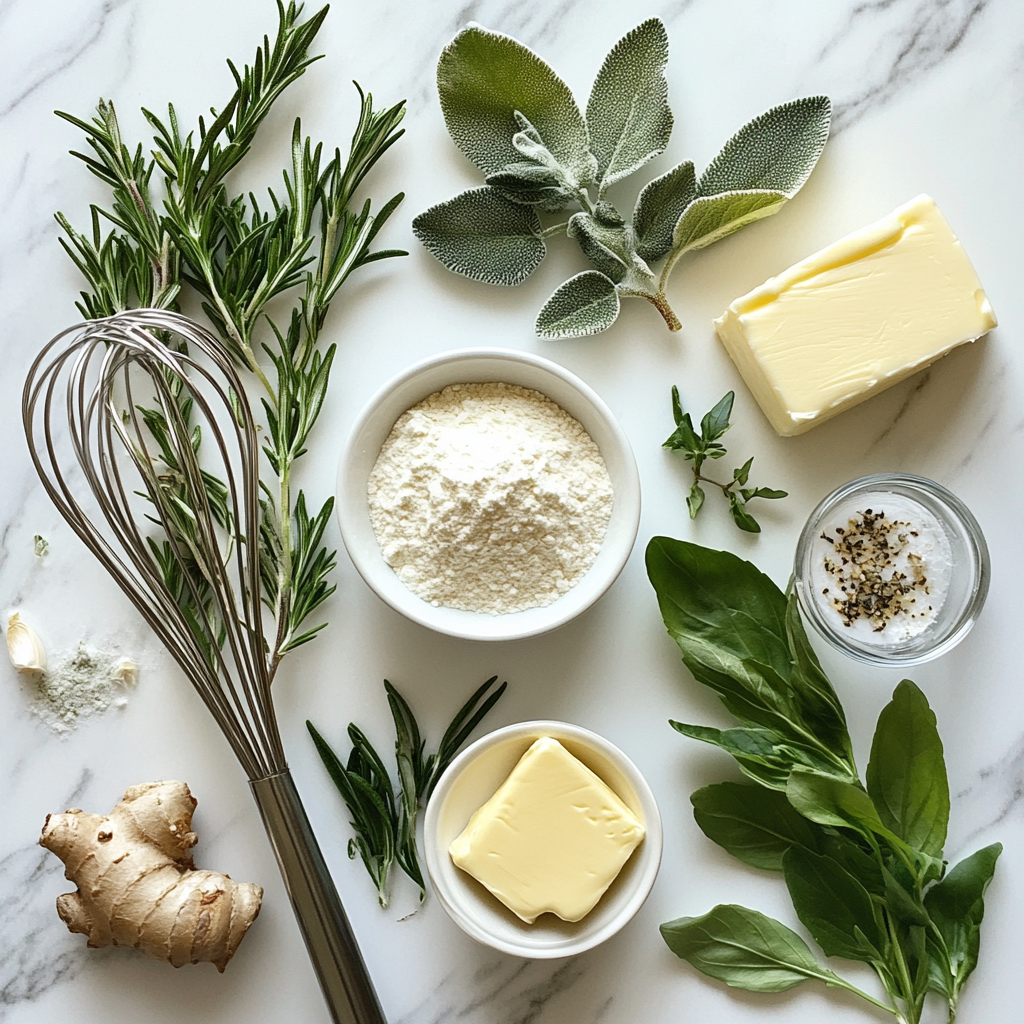
Step-by-Step Instructions: How to Make Sodium-Free Gravy Mix
Now that we’ve gone over the key ingredients, it’s time to make your sodium-free gravy mix! Follow these simple steps for a flavorful, heart-healthy gravy that you can enjoy guilt-free.
Step 1: Gather Your Ingredients
Before you start cooking, make sure you have all your ingredients prepped and ready to go. This will help you move through the steps quickly and ensure that your gravy turns out perfectly.
You’ll need:
- 2 cups sodium-free broth (vegetable, chicken, or beef)
- 1 tablespoon unsalted butter (or a dairy-free alternative)
- 1 tablespoon cornstarch (or arrowroot powder for a grain-free version)
- 1 teaspoon garlic powder
- 1 teaspoon onion powder
- ½ teaspoon dried thyme (or your favorite herb)
- ½ teaspoon black pepper (or white pepper for a milder flavor)
- 1 tablespoon nutritional yeast (optional, for added umami)
- ¼ cup milk or dairy-free milk (optional, for a creamier gravy)
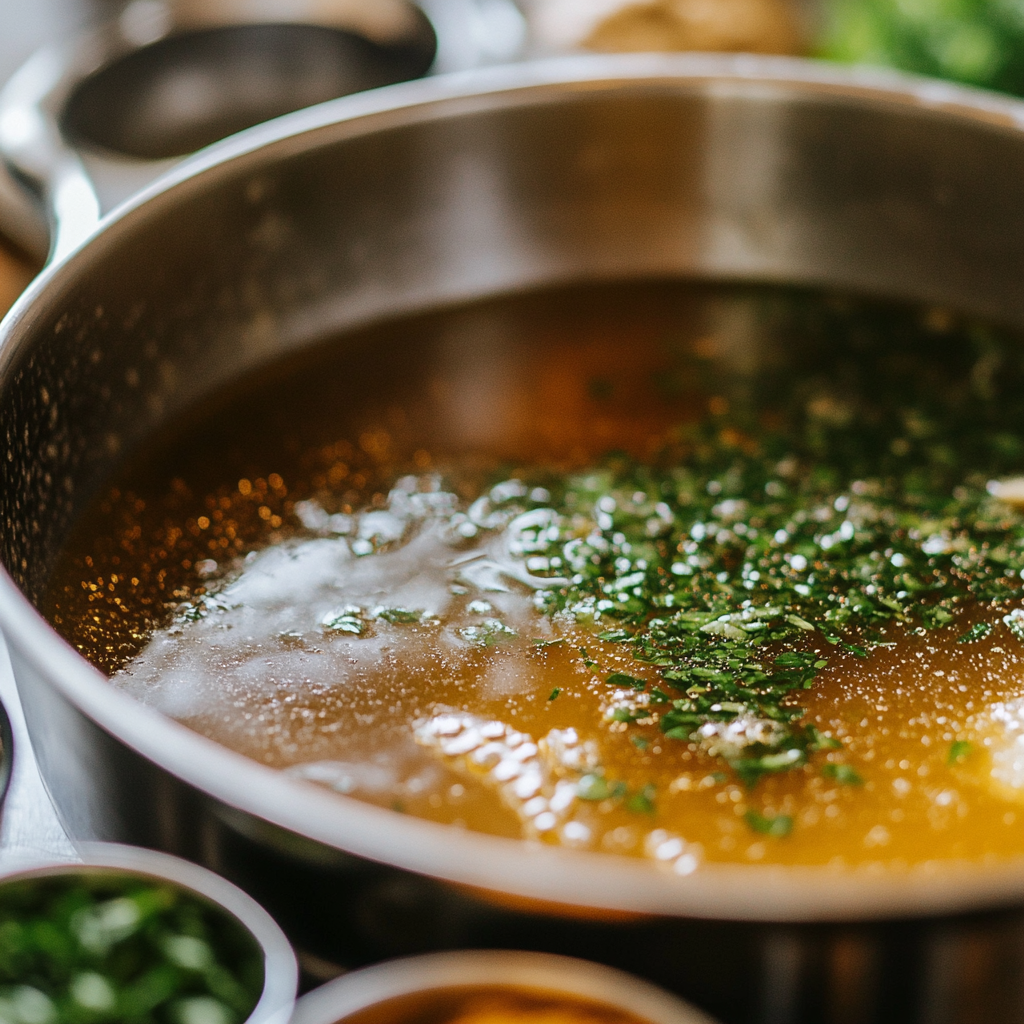
Step 2: Make a Roux (Optional)
A roux is a combination of fat (like butter) and flour that’s used to thicken sauces and gravies. While this step is optional, making a roux will give your gravy a rich, silky texture that feels more indulgent.
- In a medium saucepan over medium heat, melt the unsalted butter.
- Slowly whisk in the cornstarch (or arrowroot powder) until it forms a smooth paste, stirring constantly. Continue cooking for about 1-2 minutes, being careful not to let the mixture brown.
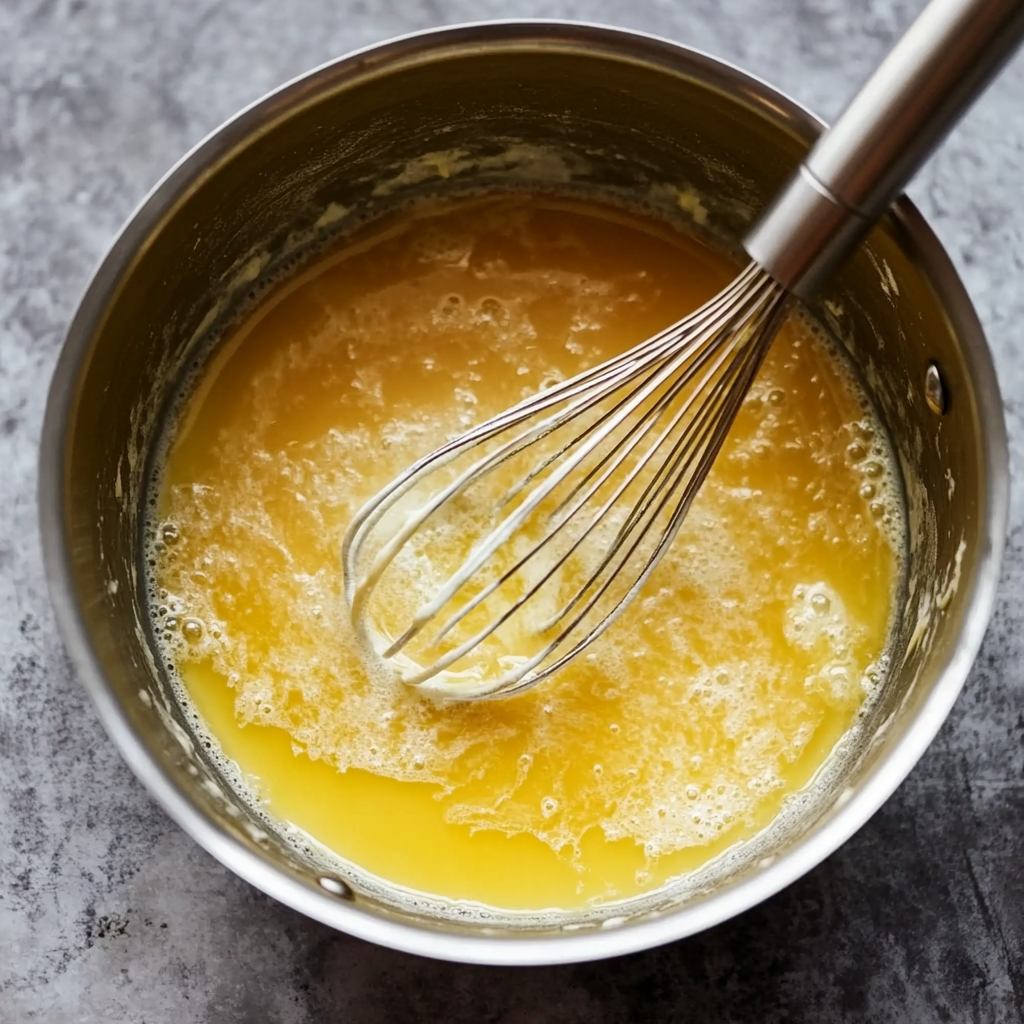
Step 3: Add the Broth
- Slowly pour in the sodium-free broth, whisking continuously to avoid any lumps. Keep whisking for 3-5 minutes until the mixture starts to thicken. If you want a creamier gravy, this is the point where you can add milk or a dairy-free alternative.
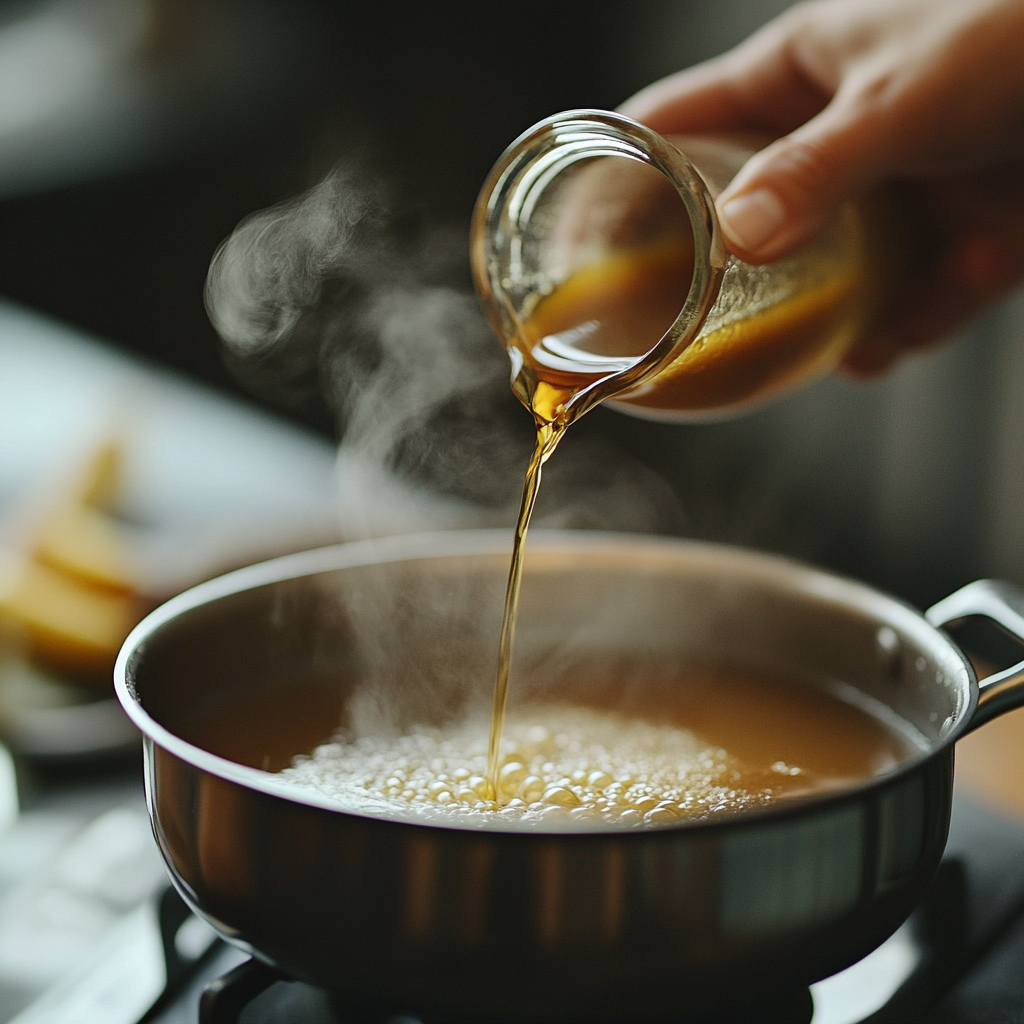
Step 4: Season and Simmer
- Once your gravy starts to thicken, add the garlic powder, onion powder, black pepper, thyme, and nutritional yeast. Stir everything together until the spices are evenly distributed.
- Reduce the heat to low and let the gravy simmer for about 10 minutes, stirring occasionally. This allows the flavors to meld together and gives the gravy time to develop a deeper, more complex taste.
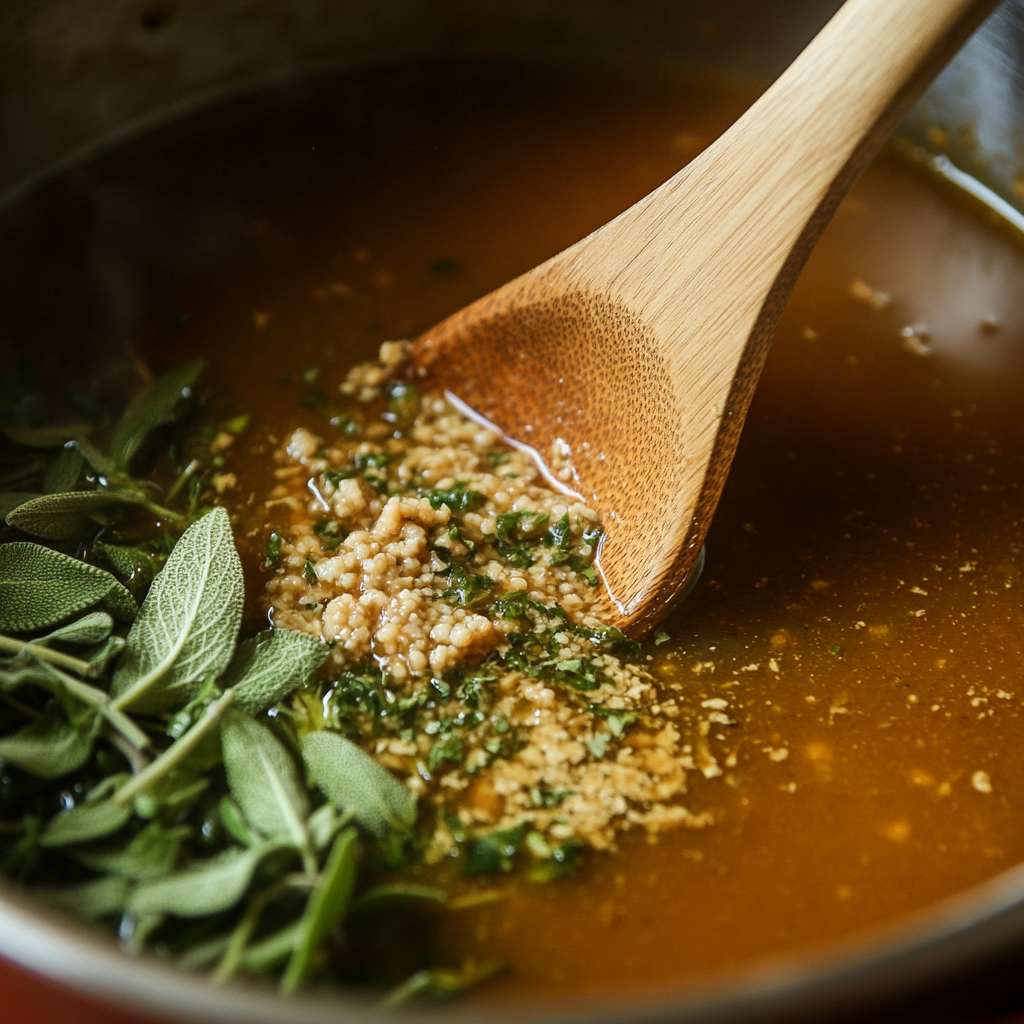
Step 5: Adjust the Consistency and Serve
- If your gravy is too thick, thin it out by adding a little more broth or milk. If it’s too thin, continue simmering until it reaches your desired consistency.
- Taste the gravy and adjust the seasoning if necessary—though, because this is a sodium-free recipe, you’ll likely rely on the herbs and spices for flavor. Once it’s ready, pour your gravy into a serving dish and enjoy!
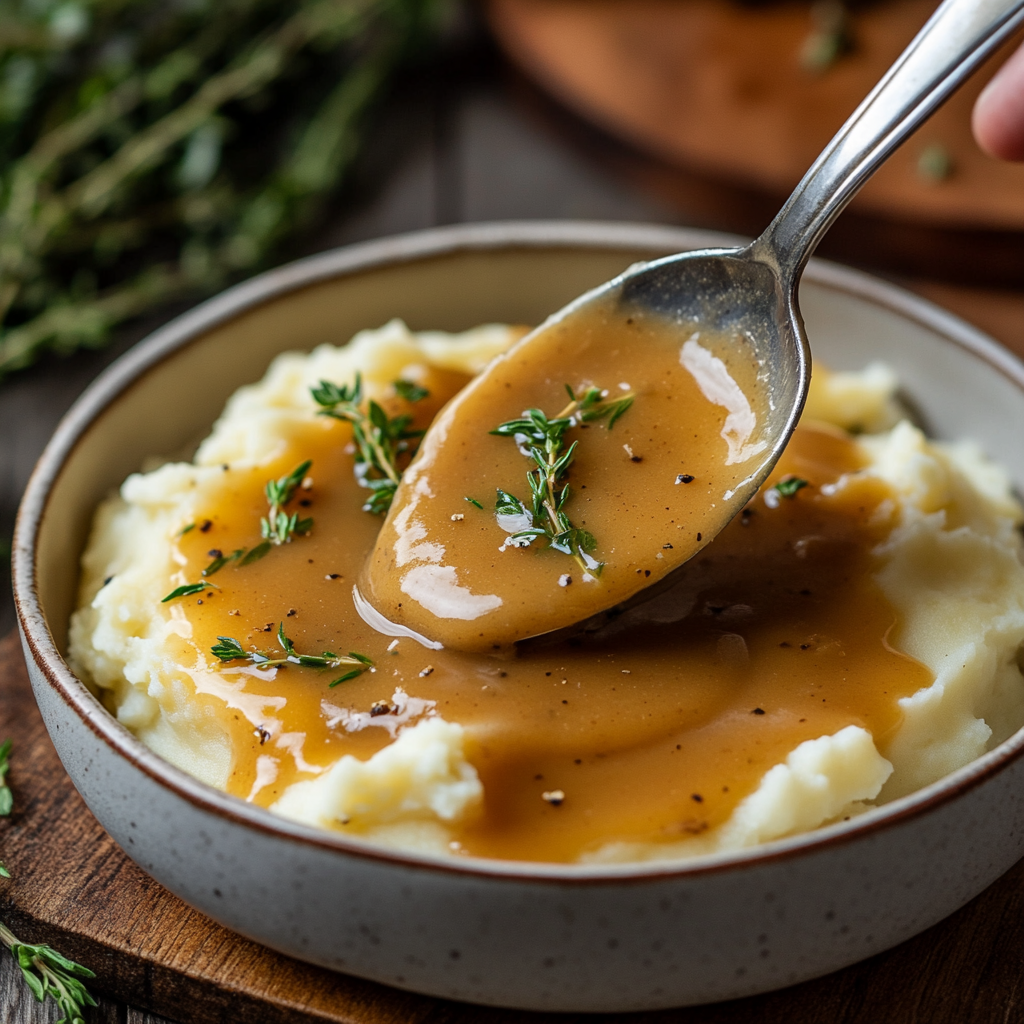
Flavor Variations and Additions for Sodium-Free Gravy Mix
The beauty of homemade sodium-free gravy mix is its versatility. Once you’ve mastered the basic recipe, you can easily adapt it to suit different flavors, cuisines, or dishes. Here are some flavorful variations you can try to add new dimensions to your gravy:
1. Mushroom Gravy
- For a savory, umami-packed gravy, add sautéed mushrooms. Finely chop your favorite mushrooms (such as cremini, shiitake, or button mushrooms), and cook them in a bit of unsalted butter or olive oil before adding them to your gravy. The mushrooms add an earthy, hearty flavor that works wonderfully over mashed potatoes or roasted meats.
2. Herb-Infused Gravy
- For a more fragrant gravy, infuse your sauce with fresh herbs. Rosemary, thyme, and sage are excellent choices, but you can experiment with whatever herbs you have on hand. Simply add a sprig or two of fresh herbs during the simmering process, then remove them before serving for a burst of flavor without overwhelming the dish.
3. Onion Gravy
- Caramelized onions add a deep, sweet flavor to your gravy that pairs beautifully with savory dishes like burgers, meatloaf, or mashed potatoes. Thinly slice an onion and sauté it until golden and caramelized, then stir it into your gravy for a rich, onion-forward sauce.
4. Sausage Gravy
- If you’re looking to make a classic Southern-style sausage gravy but want to keep it low in sodium, simply use low-sodium or sodium-free sausage, and follow the same steps as the basic gravy recipe. The sausage adds a meaty richness that’s perfect for serving over biscuits or grits.
Health Benefits of Ingredients in Sodium-Free Gravy
While gravy is often thought of as indulgent or unhealthy, making it sodium-free and using whole, nutrient-rich ingredients can transform it into a wholesome part of your diet. Here are the health benefits of some of the key ingredients in this recipe:
Sodium-Free Broth: Heart-Friendly and Hydrating
One of the biggest concerns with traditional gravy is the high sodium content, which can contribute to high blood pressure and other health issues. By using sodium-free broth, you significantly reduce the risk of these complications. Sodium-free broths are typically lower in calories and rich in nutrients, making them a great base for many dishes.
For those looking to boost their potassium intake—another mineral important for heart health—consider making homemade vegetable broth with potassium-rich vegetables like potatoes, spinach, and tomatoes. Learn more about how potassium can balance sodium in your diet in this detailed article on Sodium and Potassium Balance.
Nutritional Yeast: A Powerhouse of Nutrients
Nutritional yeast is often used in vegan and vegetarian cooking as a source of B vitamins, particularly B12, which is essential for energy production and maintaining healthy nerve function. It’s also an excellent source of protein, making it a valuable addition to a plant-based diet. When added to gravy, nutritional yeast provides a subtle, savory flavor that mimics the umami richness of traditional gravies.
Garlic and Onion Powder: Anti-Inflammatory and Immune-Boosting
Both garlic and onion powder offer more than just flavor—they’re packed with beneficial compounds that support your health. Garlic, in particular, contains allicin, a powerful antioxidant that can help reduce inflammation and boost immune function. Onion powder, on the other hand, is rich in vitamins and minerals like vitamin C and B6, which help support a healthy metabolism.
If you’re interested in exploring more ways to incorporate garlic and onion into your diet, check out this informative guide on the Health Benefits of Garlic and Onions from a reputable health blog.
Black Pepper: Enhances Nutrient Absorption
Black pepper does more than add spice to your dish. It contains piperine, a compound that enhances the absorption of certain nutrients, including curcumin (from turmeric) and vitamins found in vegetables. This makes black pepper a key ingredient in any low-sodium dish, as it helps you get the most out of the nutritious ingredients you’re using.
Frequently Asked Questions (FAQs)
Can I Make This Gravy Mix Ahead of Time?
Yes, you can make the gravy ahead of time and store it in the refrigerator for up to 3 days. Simply reheat it on the stovetop, and if it thickens too much, add a little more broth or milk to bring it back to the desired consistency.
How Should I Store Leftovers?
Leftover gravy can be stored in an airtight container in the refrigerator for 3-4 days. To reheat, simply warm it up in a saucepan over low heat, stirring occasionally. If the gravy becomes too thick upon reheating, thin it out with a little extra broth or milk.
Can I Freeze Sodium-Free Gravy?
Yes, sodium-free gravy freezes well! Simply transfer the cooled gravy into a freezer-safe container, leaving some space at the top for expansion. Freeze for up to 3 months. To reheat, thaw in the refrigerator overnight and then warm on the stovetop.
Can I Make This Gravy Gluten-Free?
Absolutely! To make this gravy gluten-free, simply replace the flour (if using) with cornstarch, arrowroot powder, or another gluten-free thickener. All of these options will give you the same silky, thick texture without any gluten.
How Do I Adjust This Recipe for Different Dietary Needs?
This recipe is very versatile and can be easily adjusted for different dietary preferences. For a vegan-friendly version, use vegetable broth, dairy-free butter, and plant-based milk. To make it low-carb, simply omit the thickening agents like flour or cornstarch and rely on reducing the liquid to create a thicker gravy.
Conclusion: A Delicious and Healthy Alternative to Traditional Gravy
Gravy is one of those comforting foods that can elevate any meal, and with this sodium-free gravy mix recipe, you can enjoy all the richness and flavor without the extra salt. Whether you’re looking to reduce your sodium intake for health reasons or simply want to try something new, this recipe is a fantastic option for anyone who loves gravy but wants to keep it heart-healthy and flavorful.
With its versatile ingredients, this gravy mix can be adapted to suit a variety of dishes, from classic mashed potatoes and roasted meats to vegan and gluten-free options. Plus, the health benefits of using fresh herbs, nutritional yeast, and sodium-free broth make this recipe a great addition to any healthy eating plan.
We encourage you to give this recipe a try and experiment with the different variations and flavor additions. Whether you opt for a mushroom gravy, a creamy onion gravy, or a fragrant herb-infused version, this recipe will quickly become a favorite at your dinner table.
